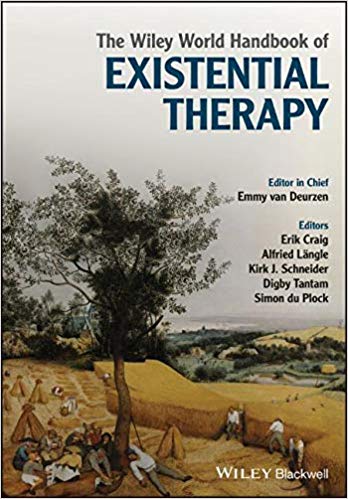The Wiley World Handbook of Existential Therapy (2019), edited by Emmy Van Deurzen, Erik Craig, Alfred Längle, Kirk J. Schneider, Digby Tantum, and Simon du Plock, is likely the most important book on existential therapy published since Existence by May, Angel, and Ellenberger in 1958. The book emerged from the First World Congress of Existential Therapy held in London in 2015, and was released at the Second World Congress of Existential Therapy in Buenos Aires, Argentina in 2019. The book provides an overview of the four primary approaches to existential therapy — 1) Daesinanalysis, 2) Existential-Phenomenological Therapy, 3) Existential-Humanistic and Existential-Integrative Therapy, and 4) Existential Analysis (including Logotherapy). For each of these approaches, there are chapters on the history, theory, practice, case illustration, key texts, and future directions. The chapters are written by the leading contemporary figures in each of these approaches to therapy. Additionally, the book provides an overview of existential approaches to group therapy, international developments, and research on existential therapy’s effectiveness.
This book is a must-read for any student considering existential therapy as well as for current practitioners. The authors strove to utilize an accessible language, which makes the volume easier to read than some other introductions to these approaches. Although the book is over 600-pages in length, it is well worth the time investment.
~ Louis Hoffman, PhD

